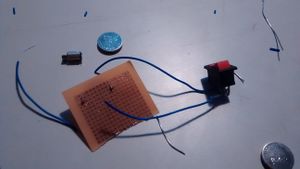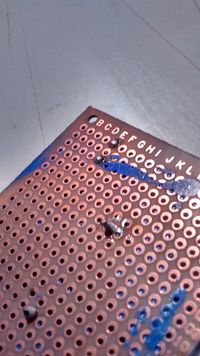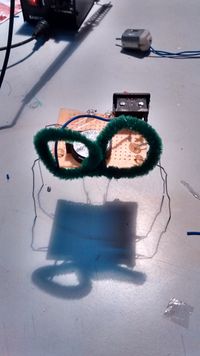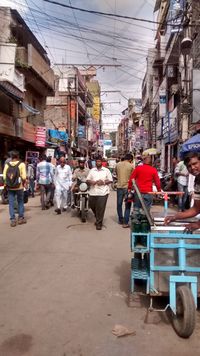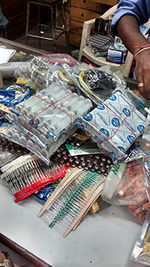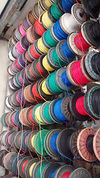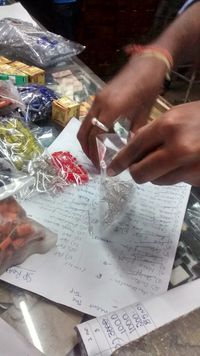Difference between revisions of "Shivon"
| Line 49: | Line 49: | ||
LDR for me was very extraordinary. I really liked the way it worked and the fact that we can use it in numerous different ways, in different products. I loved working with this component. | LDR for me was very extraordinary. I really liked the way it worked and the fact that we can use it in numerous different ways, in different products. I loved working with this component. | ||
| + | ==== '''Touch switch''' ==== | ||
| − | + | This experiment was very interesting. Touching completed the circuit. As soon as we touched each other or held hands (holding one end of the wire with the other hand) the circuit was completed and the LED lit up. It was quite captivating. | |
| − | |||
| − | + | === '''Capacitors and diodes''' === | |
| − | + | Capacitors and diodes were another fun component to work with. It’s fascinating to understand how these tiny components can do such amazing things. I learnt that capacitors store energy in them, which can be utilised later. Capacitors of different values can be used according to the requirement. | |
Revision as of 01:37, 12 October 2015
Contents
MicroRobots
Day 1: Introductory Class
To start with, I took this course because I didn’t have any knowledge about electronics at all. And sensors are something that could be inculcated in a lot of products and would also help me further in designing products. So on the first day we built a tiny robot of our own with a motor, battery and battery holder, switch and wires to complete the circuit. This was the first time I actually made a circuit on the PCB board and soldered it. First when I tried to solder, I found it a bit easy but later I realized that it has a particular technique. The soldering iron should be placed on the board first at a certain angle then the soldering wire should be held while it melts on the required place. I had a difficulty while soldering the motor because one of the legs broke when I switched on the motor. So the solution was to neatly solder the leg back but I couldn’t do so since I didn’t know where exactly I had to place the leg. So I took Shreyasi’s help for it and learnt how to solder it back. After all the connections were made, the robot worked perfectly fine. To make it move, we used U-pins as legs and balanced the robot. I was very fascinated by the way it moved. Also, everyone’s robot moved differently depending on the way they fixed the legs.
Trip to SP road
Day 2
As soon as we entered the lanes, all I could see was electrical shops. There were so many of them and they had almost every electrical component. When we reached Vishal electronics we realized that it is a very busy store and people kept coming and going. There was absolutely no space to even stand. It took like 5-6 hours for them to get all the things from the list and then count each and every component and then negotiate. It was interesting to see so many types of resistors and capacitors, sensors, tools, etc. I had no idea that an electrical shop would be so crowded. There were so many other electrical shops next to each other and to my surprise they had a good rapport with each other. It was really exhausting to just stand there and keep checking. But they patiently got each and every component, although they had to attend so many customers at once. It was a different experience to look around and understand how things worked, but very exhausting and irritating at a certain point.
Intro to Components
Mini project: Lemon battery
I was absent for this class, but I tried this experiment at home. I had absolutely no idea that a lemon or a citrus fruit could be used to make a battery because of the citric acid. So for this battery to work, we used copper wire (cathode) and a galvanized (coated with zinc) nail (anode). Once, the copper wire and the nail were inserted in the lemon and connected through wires, the LED did not light up because the voltage that was received wasn’t enough for the LED to light up. Through this project, I learnt how the process of electrolysis takes place.
Resistors
Since I didn’t study physics much, I didn’t know what exactly resistors do. After experimenting with it, I understood it uses. I remembered few things that I had learnt in 9th and 10th std about parallel and series connections. Working with a breadboard was very convenient and great to work with.
Potentiometer, Thermistor and LDR
Working with these components was a really good experience. Potentiometer was something that we actually use in our everyday life, and I had no idea about it. It was very engaging. Thermistor was something that I had never seen or heard of before. Since we had attached a speaker to the connection, we could hear the variations as and when we heated the thermistor. I found it really amusing. LDR for me was very extraordinary. I really liked the way it worked and the fact that we can use it in numerous different ways, in different products. I loved working with this component.
Touch switch
This experiment was very interesting. Touching completed the circuit. As soon as we touched each other or held hands (holding one end of the wire with the other hand) the circuit was completed and the LED lit up. It was quite captivating.
Capacitors and diodes
Capacitors and diodes were another fun component to work with. It’s fascinating to understand how these tiny components can do such amazing things. I learnt that capacitors store energy in them, which can be utilised later. Capacitors of different values can be used according to the requirement.
